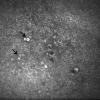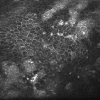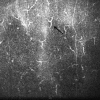In Vivo Analysis of Prostaglandins-induced Ocular Surface and Periocular Adnexa Modifications in Patients with Glaucoma
- PMID: 29475902
- PMCID: PMC5905187
- DOI: 10.21873/invivo.11227
In Vivo Analysis of Prostaglandins-induced Ocular Surface and Periocular Adnexa Modifications in Patients with Glaucoma
Abstract
Background/aim: Prostaglandin analogues (PGAs) are a first-line medical treatment for glaucoma because of their powerful intraocular pressure (IOP) lowering effect, few systemic side-effects (SEs), and the once daily administration. Despite the high systemic safety profile, the chronic use of PGAs may induce periocular and ocular surface (OS)-related side effects, which affect a significant proportion of glaucomatous patients. In this review, we summarize the current knowledge about SEs of PGAs on periocular structures and OS, and their implications in clinical practice.
Materials and methods: A comprehensive literature search on the PubMed platform was performed. Two hundred fifty articles fulfilling key words were identified, of which 180 were excluded since they did not concern the effects of PGAs on the periocular tissues and OS, or because of their limited relevance. The following key words were used and combined, to narrow-down the literature: "prostaglandin" and "ocular surface," which identified 184 unique publications, of which 68 were selected; "prostaglandin" and "periocular" which identified 46 unique publications, of which 11 were selected. An additional search was conducted using "prostaglandin" and "Meibomian glands (MGs)", which identified twenty unique publications, of which 8 were selected. Thus, a total of 70 articles were chosen based on their relevance and were included in this review.
Results: Prostaglandin-associated peri-orbitopathy, skin pigmentation and hypertrichosis, eyelash growth, and MGs dysfunction are the most frequent modifications of periocular tissues. They are induced by the tissue accumulation of PGAs, and FP receptor stimulation. Without preservatives, PGAs act as stimulators of conjunctival goblet cells, which are the main source of ocular surface mucoproteins, and seem to increase conjunctival epithelium microcysts proposed as in vivo hallmark of the trans-scleral aqueous humour outflow. Additional PGA-induced modifications can be recognized in the cornea, corneo-scleral limbus, conjunctival stroma and, conjunctiva-associated lymphoid tissue, mainly appearing as inflammatory changes. OS epithelia desquamation, chemosis, apoptosis, dendritic cell activation, conjunctival or episcleral vasodilation, and sub-basal nerve plexus disruption were also described in patients receiving preserved PGAs.
Conclusion: PGAs induce several modifications of the OS structures and adnexa; nonetheless, none of them significantly reduces the local safety profile of this class of drugs. Moreover, the OS changes do not affect the IOP lowering efficacy of PGAs. On these bases, local SEs of PGAs should not discourage clinicians in using this class of medications because of their efficacy, the systemic safety profile, and the better adherence.
Keywords: Glaucoma; adverse events; benzalkonium chloride; in vivo confocal microscopy; medical therapy; prostaglandin analogues; review; side effects.
Copyright© 2018, International Institute of Anticancer Research (Dr. George J. Delinasios), All rights reserved.
Figures







Similar articles
-
The use of benzalkonium chloride in topical glaucoma treatment: An investigation of the efficacy and safety of benzalkonium chloride-preserved intraocular pressure-lowering eye drops and their effect on conjunctival goblet cells.Acta Ophthalmol. 2023 Dec;101 Suppl 278:3-21. doi: 10.1111/aos.15808. Acta Ophthalmol. 2023. PMID: 38037546
-
Meibomian Gland Features and Conjunctival Goblet Cell Density in Glaucomatous Patients Controlled With Prostaglandin/Timolol Fixed Combinations: A Case Control, Cross-sectional Study.J Glaucoma. 2018 Apr;27(4):364-370. doi: 10.1097/IJG.0000000000000899. J Glaucoma. 2018. PMID: 29401160
-
How latanoprost changed glaucoma management.Acta Ophthalmol. 2024 Mar;102(2):e140-e155. doi: 10.1111/aos.15725. Epub 2023 Jun 23. Acta Ophthalmol. 2024. PMID: 37350260 Review.
-
Effect of selected antihypertensives, antidiabetics, statins and diuretics on adjunctive medical treatment of glaucoma: a population based study.Curr Med Res Opin. 2009 Aug;25(8):1879-88. doi: 10.1185/03007990903035083. Curr Med Res Opin. 2009. PMID: 19530975
-
The Effect of Prostaglandin Analogs on Central Corneal Thickness of Patients with Glaucoma or Ocular Hypertension: A Systematic Review.Ophthalmic Res. 2023;66(1):431-444. doi: 10.1159/000528461. Epub 2022 Dec 5. Ophthalmic Res. 2023. PMID: 36455536
Cited by
-
A Narrative Review of Ocular Surface Disease Related to Anti-Glaucomatous Medications.Ophthalmol Ther. 2022 Oct;11(5):1681-1704. doi: 10.1007/s40123-022-00557-0. Epub 2022 Aug 9. Ophthalmol Ther. 2022. PMID: 35943668 Free PMC article. Review.
-
Benzalkonium Chloride-Preserved Anti-Glaucomatous Eye Drops and Their Effect on Human Conjunctival Goblet Cells in vitro.Biomed Hub. 2021 Aug 13;6(2):69-75. doi: 10.1159/000517845. eCollection 2021 May-Aug. Biomed Hub. 2021. PMID: 34616748 Free PMC article.
-
Clinical pharmacology and pharmacogenetics of prostaglandin analogues in glaucoma.Front Pharmacol. 2022 Oct 12;13:1015338. doi: 10.3389/fphar.2022.1015338. eCollection 2022. Front Pharmacol. 2022. PMID: 36313286 Free PMC article. Review.
-
Lipidomic Analysis Reveals Drug-Induced Lipoxins in Glaucoma Treatment.bioRxiv [Preprint]. 2025 Jan 27:2025.01.24.634771. doi: 10.1101/2025.01.24.634771. bioRxiv. 2025. PMID: 39975338 Free PMC article. Preprint.
-
Clinical Efficacy of Topical Tacrolimus on Conjunctival Hyperemia Caused by Prostaglandin Analogues.Evid Based Complement Alternat Med. 2022 Oct 14;2022:3700720. doi: 10.1155/2022/3700720. eCollection 2022. Evid Based Complement Alternat Med. 2022. Retraction in: Evid Based Complement Alternat Med. 2023 Aug 16;2023:9795630. doi: 10.1155/2023/9795630. PMID: 36276850 Free PMC article. Retracted.
References
-
- Virno M, Sampaolesi R, Pecori Giraldi J, De Gregorio F, Taloni M, Brusini P, Di Staso S, Stecchi G. Ibopamine: D1-dopaminergic agonist in the diagnosis of glaucoma. J Glaucoma. 2013;22:5–9. - PubMed
-
- Fajgenbaum M, Ansari E. Prescribing Trends in a Glaucoma Clinic and Adherence to EGS Guidelines: A Retrospective, Non-Interventional, Single-Center UK Study. Adv Ther. 2017;34:2033–2044. - PubMed
-
- Mastropasqua R, Fasanella V, Agnifili L, Fresina M, Di Staso S, Di Gregorio A, Marchini G, Ciancaglini M. Advance in the pathogenesis and treatment of normal-tension glaucoma. Prog Brain Res. 2015;221:213–232. - PubMed
Publication types
MeSH terms
Substances
LinkOut - more resources
Full Text Sources
Other Literature Sources
Medical
